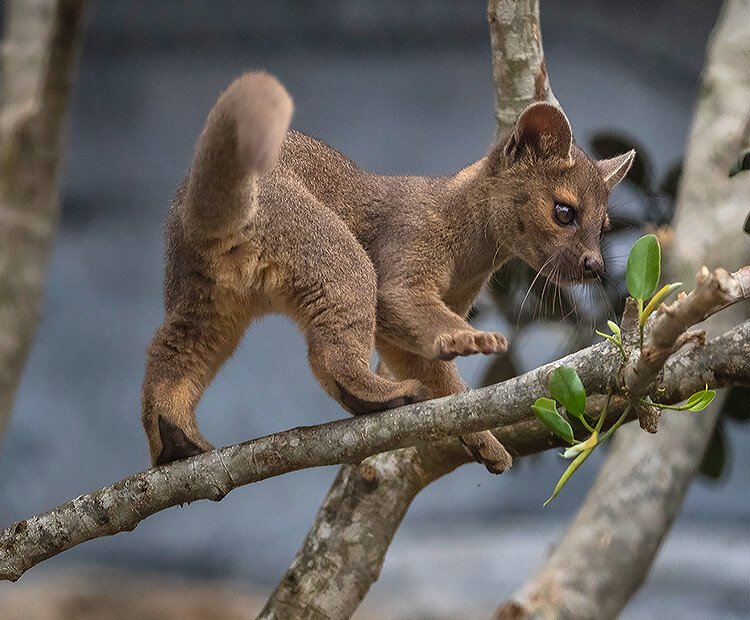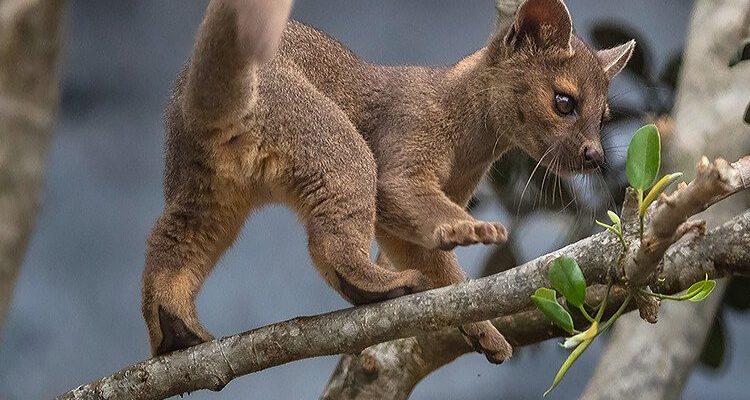
So, what exactly does the fossa eat, and how does it catch its prey? Understanding the fossa’s diet and hunting strategies is essential not just for wildlife enthusiasts but for anyone interested in how ecosystems work. Here’s a little secret: the fossa plays a crucial role in maintaining the biodiversity of Madagascar. Let’s dig in and explore!
What Do Fossas Eat?
Let’s start with the basics: the fossa is a carnivore, meaning it primarily feeds on meat. But what kinds of animals make up its diet? The fossa has a diverse menu, which is one of the reasons it thrives on the island. Here’s a closer look:
- Lemurs: These small primates are a fossa’s favorite snack. Fossas are adept at hunting them, often climbing trees to catch them off guard.
- Rodents: Small mammals like mice and rats are also on the menu. They provide a quick source of protein when lemurs are harder to find.
- Birds: The fossa doesn’t shy away from birds either. It will hunt nests and take chicks if it has the chance.
- Reptiles: In some cases, the fossa will eat small reptiles, including chameleons and geckos, adding some variety to its diet.
Fossas are opportunistic feeders, so they’ll eat whatever is available. They need a balanced diet to thrive in their environment, which is a mix of dense forests and open areas. This adaptability allows them to survive in various conditions.
How Do Fossas Hunt?
When you think about hunting methods, you might picture a lion stalking through grasslands. For the fossa, hunting is all about agility and stealth. They’re both ground and tree hunters, meaning they can adapt their strategies depending on whether they’re up high or down low.
Fossas have keen senses, especially their sight and hearing. They rely on these senses to detect movement and locate prey. Here’s how they usually go about their hunting:
- Stealth: Fossas are incredibly quiet. They can sneak up on their prey without making a sound, which is key when hunting agile animals like lemurs.
- Climbing: These animals are exceptional climbers. They use their sharp claws to grip tree bark and navigate branches, allowing them to ambush lemurs or birds effectively.
- Chasing: When prey is spotted, fossils can launch a quick chase. Their long legs and flexibility help them move swiftly to catch their target.
You might be wondering how they actually catch a fast-moving lemur, right? The fossa’s hunting strategy often involves patience. They’ll wait for the perfect moment to strike, using their jump and claws to grab their prey almost effortlessly.
Role of Territory in Hunting
Territory plays a significant role in a fossa’s hunting success. Fossas are solitary animals, meaning they prefer to hunt alone. Each individual has a defined territory that they patrol. How does this help them in their hunt?
Having a set territory allows fossas to know their environment well. They can learn the patterns of their prey and identify the best hunting spots. Moreover, they often mark their territory with scent markings, ensuring that other fossas stay away. This helps reduce competition for food and keeps their hunting grounds plentiful.
It’s interesting to note that the size of their territory can vary based on the availability of food. If resources are scarce, a fossa might need a larger area to find enough to eat, while a more abundant region allows for a smaller, more manageable territory.
Dietary Challenges and Adaptations
While fossas are skilled hunters, they face challenges when it comes to their diet. Habitat loss, climate change, and hunting pressures have all impacted their food sources. With less forest available, finding prey becomes more difficult. Here’s how fossas adapt to these challenges:
- Diverse Diet: By eating a wide variety of animals, fossas improve their chances of finding food even when some prey populations decline.
- Increased Mobility: Fossas can travel larger distances if necessary. If their usual hunting grounds become sparse, they’ll explore new areas for food.
- Hunting at Different Times: Fossas are somewhat nocturnal, which gives them the advantage of hunting when their prey might be less alert.
These adaptations highlight the fossa’s resilience. However, they also remind us of the importance of conservation efforts to protect their habitats and food sources.
Fossa Social Behavior and Its Impact on Diet
Fossas are generally solitary creatures, but they do come together during mating season. Their social behavior can affect their hunting strategies and overall diet. Let’s look into how this works:
During mating season, males and females will establish temporary territories that overlap, allowing them to find mates. However, this can lead to competition for food. Males, in particular, might hunt more aggressively to impress females, increasing their chances of attracting a mate.
In contrast, when it’s not mating season, they tend to stick to their solo ways. This can encourage a more efficient hunting strategy since they don’t have to share resources. Their ability to adjust their behavior based on social circumstances shows how adaptable these creatures truly are.
The Importance of Fossas in Madagascar’s Ecosystem
Fossas play a vital role in the ecosystems of Madagascar. By keeping lemur populations in check, they help maintain the balance within their environment. This balance is critical for diverse wildlife to thrive.
When prey populations are controlled, it prevents overgrazing and ensures that vegetation can grow healthily. In this way, fossas contribute to the overall health of their habitats. They act as both predator and prey, showcasing nature’s beautiful balance.
Unfortunately, threats to the fossa, like habitat destruction due to agriculture and deforestation, pose risks not just for them but for the entire ecosystem. Protecting the fossa means preserving the delicate balance of life in Madagascar.
Understanding the diet and hunting strategies of the fossa reveals a lot about this unique animal and its role in Madagascar’s ecosystem. These agile hunters have adapted to their environment in fascinating ways, allowing them to thrive despite the challenges they face. From their diverse diet to their stealthy hunting tactics, fossas showcase the complexity of predator-prey relationships.
As we learn more about the fossa and the threats it faces, it becomes clear that protecting this incredible species and its habitat is crucial. By appreciating these majestic animals, we can help ensure that they continue to roam Madagascar’s forests for generations to come.

